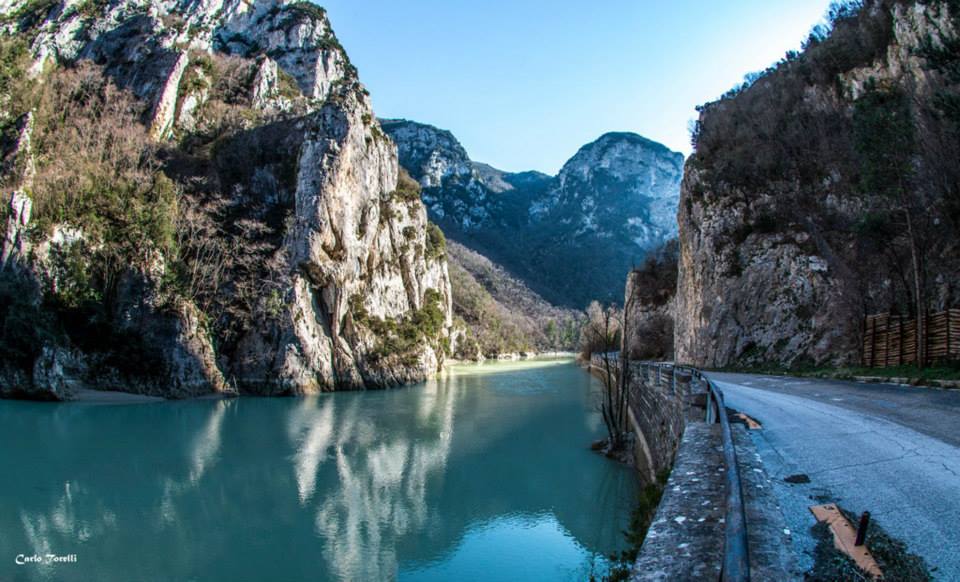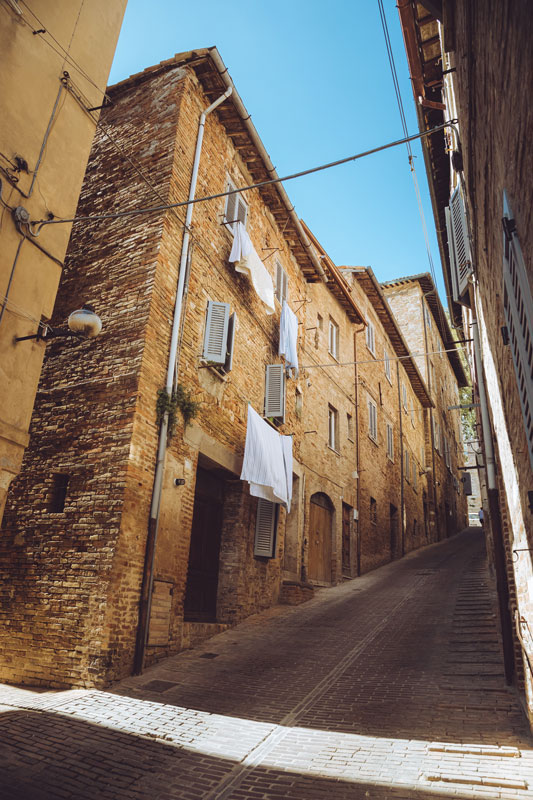
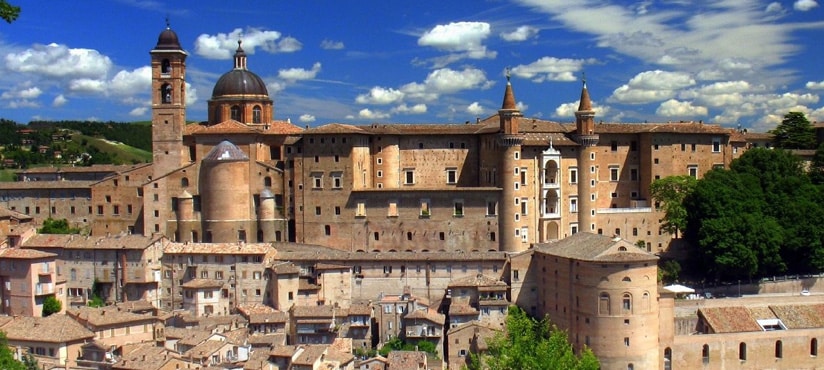
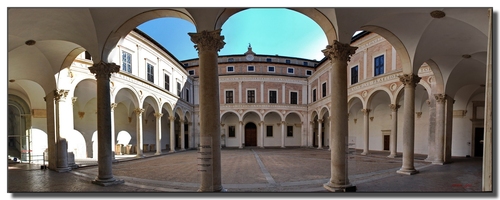
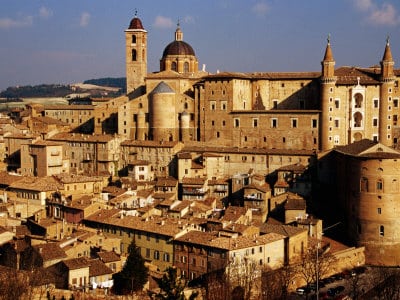
Urbino
Urbino, a Unesco World Heritage City, was one of the most important centers of the Italian Renaissance and still preserves its peculiar architectural features. The appearance of the city has come down to us intact and represents the pinnacle of Renaissance art and architecture, harmoniously adapted to its physical environment and its medieval past that make it a truly exceptional place.
Its origins are very old, the first documents date back to the third century BC, when Urvinum Mataurense was a Roman municipality, but the period of maximum cultural splendor is due to the government of Federico da Montefeltro, lord of Urbino from 1444 to 1482. In fact, it was in those years that Federico built the Palazzo Ducale, a high expression of his refined culture, which today houses the prestigious Galleria Nazionale delle Marche.
During its brief cultural supremacy, the city of Urbino attracted some of the most illustrious scholars and artists of the Renaissance who created an urban complex of exceptional homogeneity, influencing the cultural development of the rest of Europe.
At the Court of Urbino lived and worked the greatest artists of the ‘400, such as Luciano Laurana, Francesco di Giorgio Martini, Piero della Francesca, Leon Battista Alberti, Paolo Uccello, Pedro Berruguete, Giusto di Gand, Sandro Botticelli, Bartolomeo Corradini, Giovanni Santi, Baccio Pontelli. In this area of great stimuli were formed two excellent personalities: Raphael Sanzio and Donato Bramante.
What is striking about the urban design of Urbino is the dense urban plot in which narrow streets, sudden ups and downs and alleys and stairways and underpasses, palaces and churches form, thanks also to the landscape, a truly delightful setting. Not to be missed: Palazzo Ducale, Oratories of San Giovanni and San Giuseppe, Raphael’s birthplace, Albornoz Fortress, Cathedral and Church of S. Francesco.
Today Urbino is also known as an important city of studies, in fact it excels for the presence of the “Carlo Bo” University, founded at the beginning of the 16th century by Guidobaldo da Montefeltro, of the Superior Institute for Artistic Industries (ISIA) and of the so-called “School of the Book”, famous for having formed artistic talents in the field of graphics and of the various engraving techniques.
Urbania
Urbania, the ancient Casteldurante, was the summer residence and hunting ground of the Dukes of Urbino.
Famous because already in 1500 there were 150 workers who created the most valuable artistic ceramics of the Renaissance, this tradition is still continued with great success.
Don’t miss the Church of the Dead with its mummies.
Did you know? Until 1636 the city of Urbania was called Casteldurante. About 7,000 people live in Urbania!
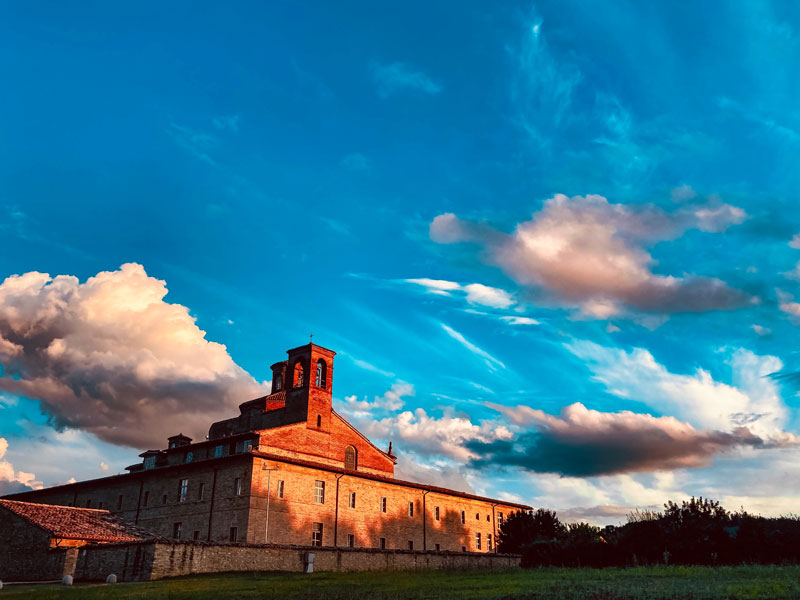
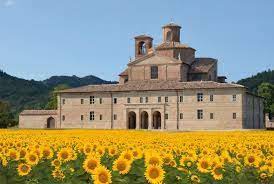
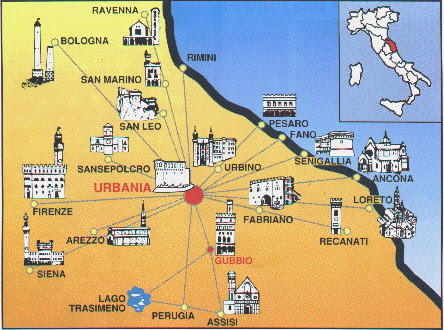
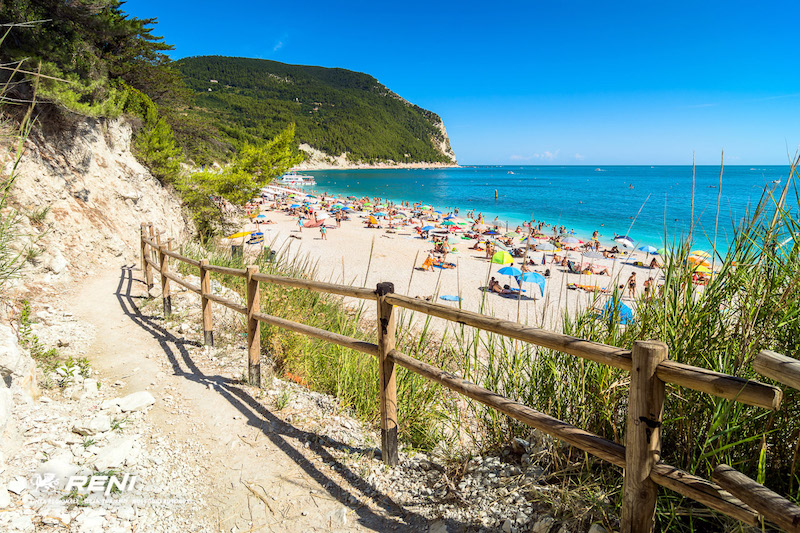
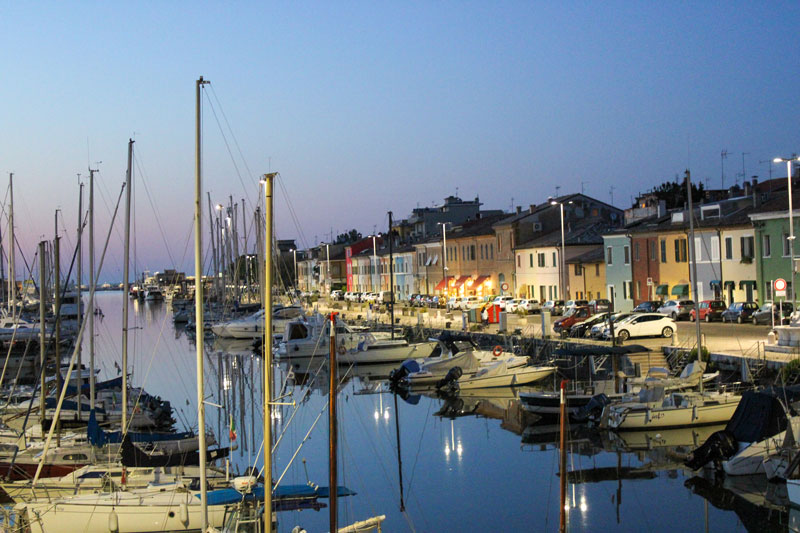
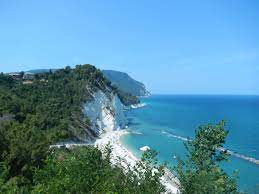
Adriatic coast
At 50km (1 hour by car) km from Biroccio you can reach the Marche coast, which overlooks the Adriatic Sea: free or equipped beaches, surrounded by green hills.
If you are willing to make a few more kilometers you can find sea places like the Bay of Vallugola.
San Bartolo and Bartolomeo Park, Fiorenzuola di Focara
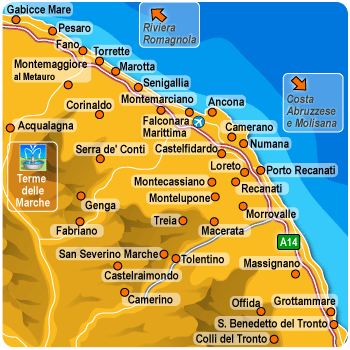
The Frasassi Caves
The Frasassi Caves are a spectacular work of nature and time: since ancient times the work of water has first excavated the natural cavities and then created an incredible series of stalactites and stalagmites. The background created by nature is amazing.
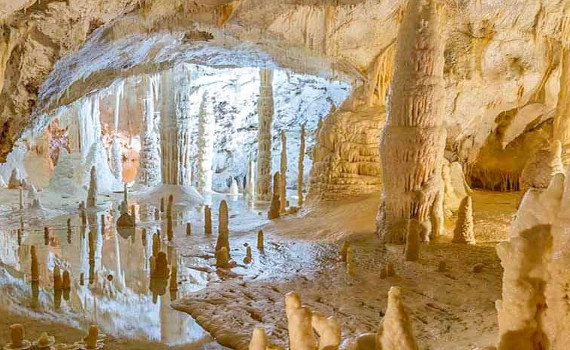
Sasso Simone and Simoncello Natural Park
The Natural Park of Sasso Simone and Simoncello was created to protect an area of exceptional naturalistic and landscape value: with the wild orchids, in summer with the green of the woods, in autumn with the scent of mushrooms and mosses, in winter with the snow mantle, which is wounded by the tracks of wild animals.
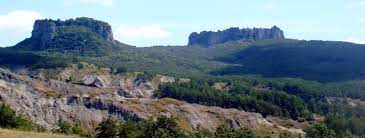
Mondavio
According to the tradition, Mondavio was founded thanks to a Franciscan convent in 1200, on the suggestion of Saint Francis of Assisi, who appreciated the sweet, pleasant and rich in fauna landscape of the area.
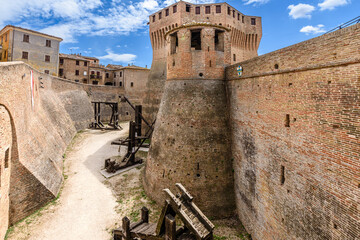
Sassacorvaro
It is estimated that the origins of the village of Sassocorvaro date back to 1100. The famous Rocca Ubaldinesca was built around 1475 to a design by Francesco di Giorgio Martini, who worked as architect and military engineer for Duke Federico da Montefeltro in the early years of his service. During the Second World War, Pasquale Rotondi, an art historian who had recently been appointed Inspector of the Galleries and Works of Art of the Marches, saved more than ten thousand works from Nazi bombing and confiscation.
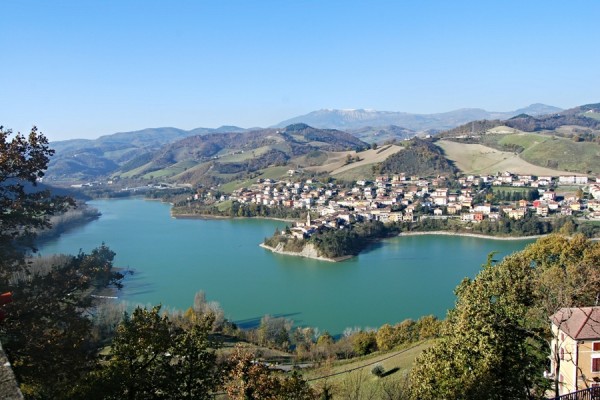
San Leo
Located 589 meters above sea level, above the Marecchia Valley. The main attraction of San Leo is its fortress, which was built 639 meters above sea level in an impregnable position. It was built in the Middle Ages and still has a majestic appearance with its long crenellated wall and two massive cylindrical towers.
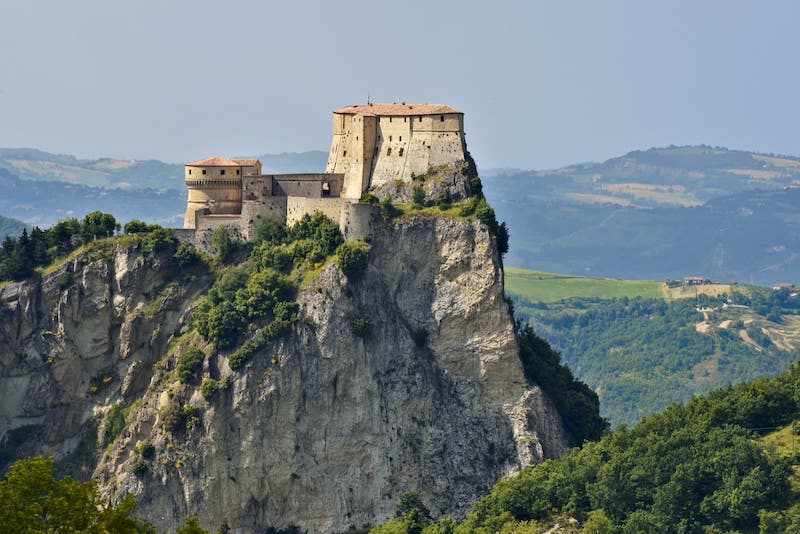
Gradara
Gradara is a fairy-tale place with an ancient flavor, where legend and history embrace to tell the tragic love story between Paolo and Francesca, sung by Dante, Petrarca, Boccaccio and D’Annunzio.
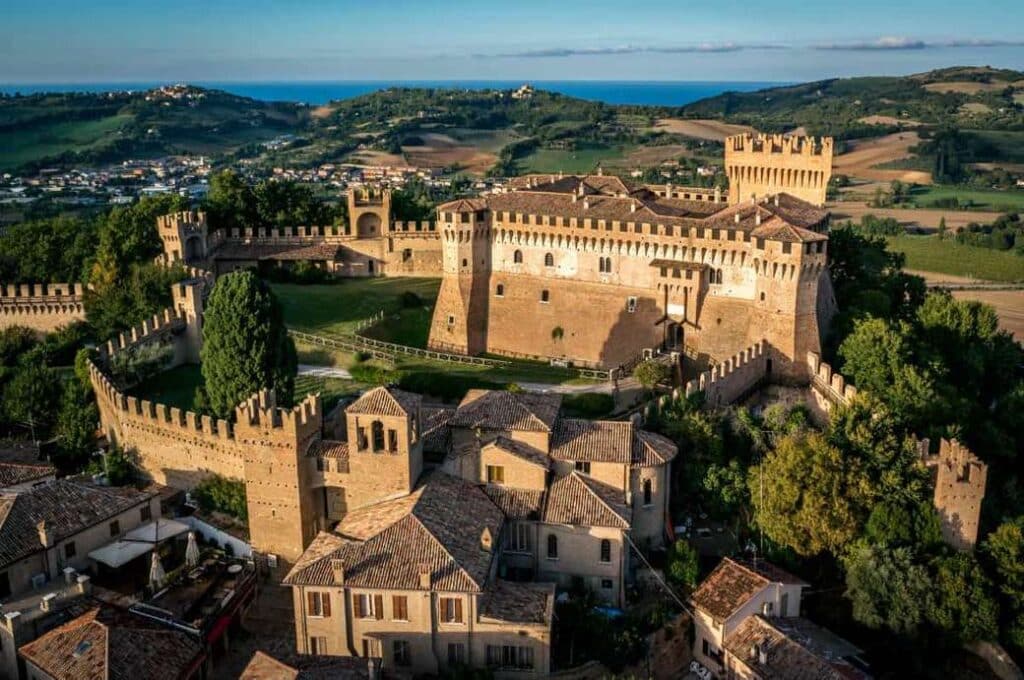
The Furlo Gorge
The Furlo Gorge is a canyon carved over the millennia by the river into the limestone rock. It is located in the province of Pesaro Urbino, on State Road 3 Flaminia. It has a great historical fame for the great works that first the Etruscans and then the Roman Emperors carried out and for having been the scene of great battles. It was Vespasian who dug the tunnel under which one still travels to pass from the Adriatic to the Tyrrhenian Sea. The Furlo State Reserve is a treasure chest of biodiversity, an open book for geologists, a spectacle of nature where you can go trekking, mountain-biking, canoeing.
